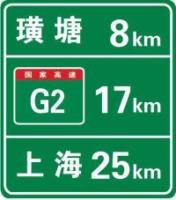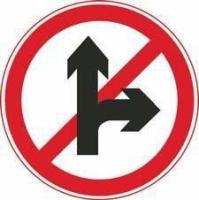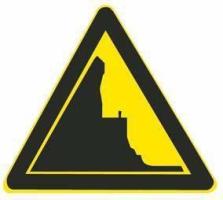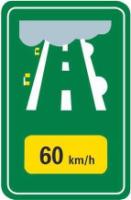1、The double yellow solid lines in the middle of the road are used to separate the traffic flow in opposite directions, crossing the lines to overtake or make a turn is allowed if it is safe.

A、Right
B、Wrong
Answer:B
2、May turn right when encountering this traffic light at the intersection.

A、Right
B、Wrong
Answer:A
3、Whats the meaning of this sign?

A、stop to yield
B、one-way road
C、going first when crossing each other
D、the opposite vehicle goes first when crossing each other
Answer:C
4、When the driver senses a tire blowout on the road, he should control the direction of the vehicle and use emergency braking to bring the vehicle swiftly to a stop.
A、Right
B、Wrong
Answer:B
5、Which is correct when learning driving on road?
A、drive the corresponding coach car with coach sitting by to guide
B、drive the corresponding coach car alone
C、drive the corresponding coach car with other one who is not a coach sitting by to guide
D、drive the private car with coach sitting by to guide
Answer:A
6、When a vehicle passes a level crossing, it is prohibited from overtaking.
A、Right
B、Wrong
Answer:A
7、Whats the meaning of this sign?

A、going straight and turning left at an interchange
B、going straight and turning right at an interchange
C、going straight and turning left
D、going straight and turning right
Answer:A
8、Whats the meaning of this sign?

A、indication of the place name of the expressway ending
B、indication of the driving route of the expressway
C、indication of the driving direction of the expressway
D、indication of the location and distance of the expressway
Answer:D
9、Honking in a foggy day can arouse the attention of the opposite side. After hearing the honking from the opposite side, the driver should also honk to respond.
A、Right
B、Wrong
Answer:A
10、At night, the drivers observation is markedly poorer than in the daytime and the range of visibility range is _______.
A、Unchanged
B、Irregular
C、Longer
D、Shorter
Answer:D
11、How to do in this situation?

A、stop and yield to the pedestrians
B、bypass from the front of the pedestrians
C、honk to remind the pedestrians
D、bypass from the rear of the pedestrians
Answer:A
12、What does the traffic light mean?

A、allowed to pass
B、draw attention
C、intersection warning
D、prohibited from passing
Answer:D
13、When driving at night, the driver should go at a lower speed because his field of vision is limited and he can hardly observe the traffic conditions beyond the area covered by his vehicle light.
A、Right
B、Wrong
Answer:A
14、When a vehicle stops temporarily in a rainy day, the driver should turn on ______.
A、The head and tail fog lights
B、The hazard lights
C、The high beam light
D、The reverse light
Answer:B
15、Whats the meaning of this sign?

A、no going straight and no changing to left lane
B、no going straight and no left turn
C、allowed to go straight and change to left lane
D、no going straight and no right turn
Answer:D
16、A motorized vehicle is not allowed to stop in the section 50 meters to the narrow road less than 4 meters width.
A、Right
B、Wrong
Answer:A
17、Whats the meaning of this sign?

A、embankment road
B、dangerous hillside road
C、rock-falling road
D、cliffside road
Answer:B
18、When a vehicle encounters a bike rider coming in the opposite direction on the road, the driver should _________.
A、Continuously change the high and low bean lights
B、Continuously honk
C、Use the low beam light, reduce speed or stop to evade
D、Use the high beam light
Answer:C
19、Whats the meaning of this sign?

A、embankment road
B、steep uphill road
C、continuous up slopes
D、steep downhill road
Answer:D
20、Whats the meaning of this sign?

A、recommended speed in unusual weather
B、minimum speed in unusual weather
C、average speed in unusual weather
D、maximum speed in unusual weather
Answer:A